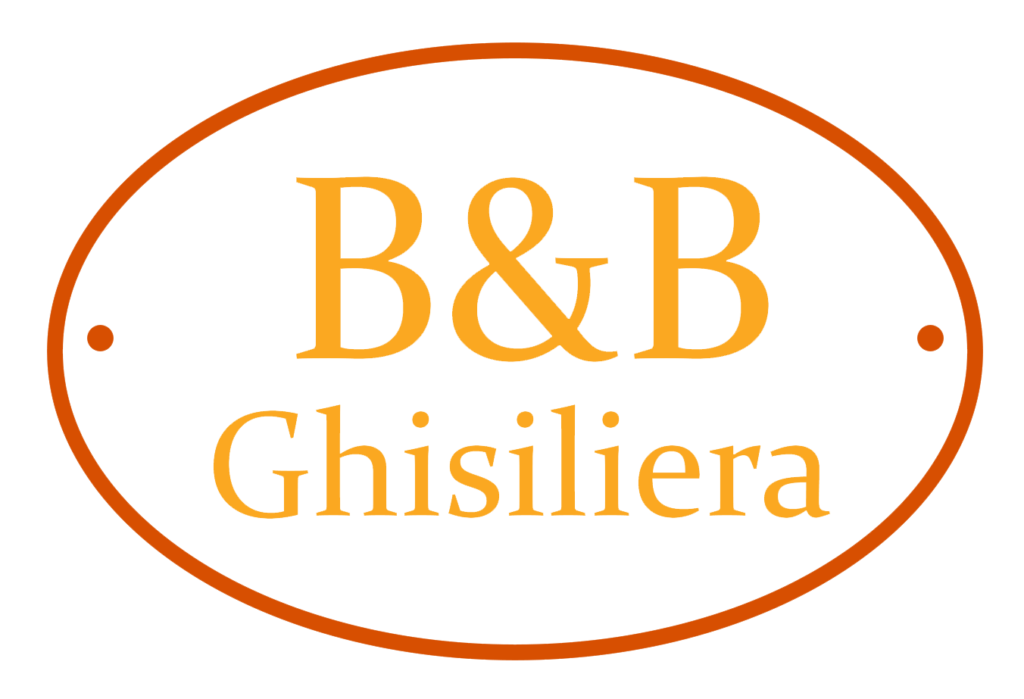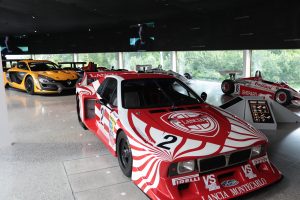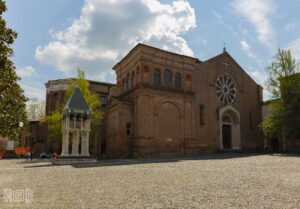Would you like to take a plunge with us into the 800-year-old past to discover the journey of San Francesco of Assisi in Bologna? Don’t wait and read this article to learn about the beauty and history of the Basilica of San Francesco of Assisi in Bologna, in Piazza Malpighi 9.
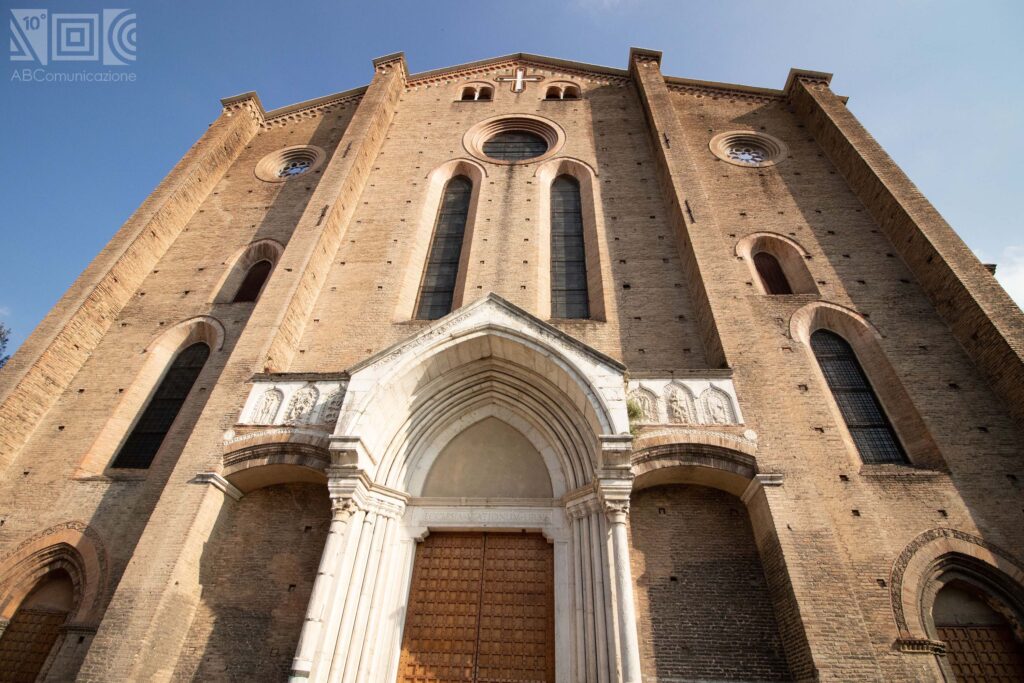
Why is it called the Basilica of San Francesco?
As can be guessed, the name of the basilica originates from the name of the saint from Assisi whose presence in the city dates back to 1221.
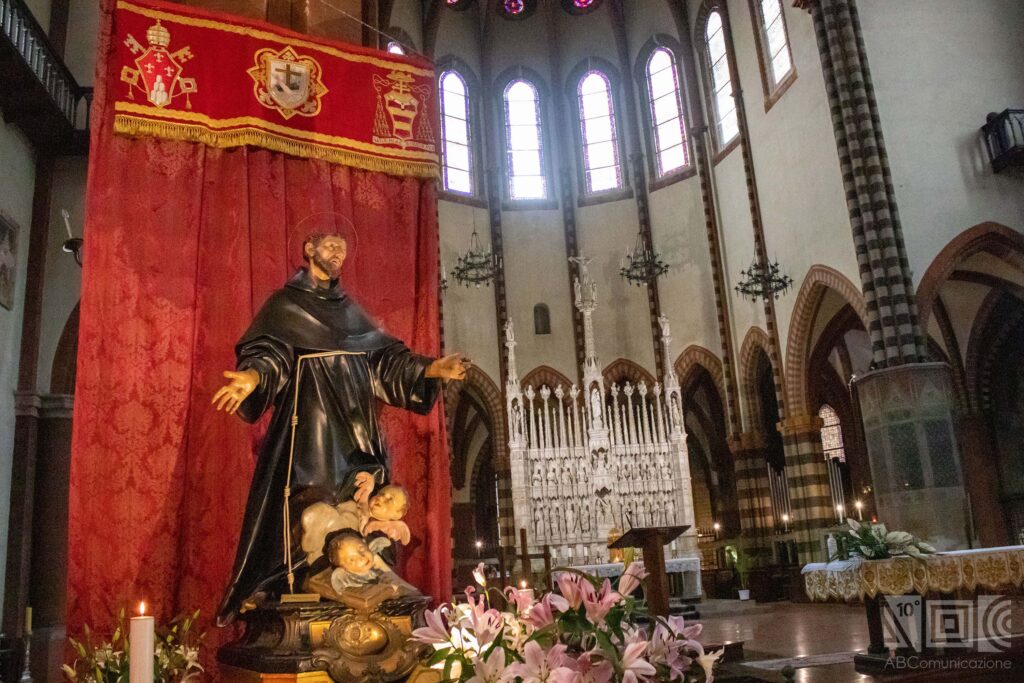
The Franciscan community has been present in Bologna since the 13th century. In 1211, in fact, San Francesco sent Bernardo di Quintavalle to Bologna, the first friar present in the city, with the task of establishing the first Franciscan convent called ‘Santa Maria delle Pugliole’.
While it was in 1221, on his return from his journey to the East, Francesco went to Bologna for the first time. It is said that he was shocked by the fact that his brothers’ convent was known in the city as the ‘House of the Friars’. This name was not appropriate to San Francescos’ rule of absolute poverty and therefore he urged the friars living in the Bologna convent to leave their home.
San Francesco return to Bologna is witnessed by Tommaso da Spalato on 15 August 1222, this time to preach the Franciscan rules in Piazza Maggiore.
The troubled history of the Basilica of San Francesco
In 1236, ten years after the death of San Francesco, construction work began on the Basilica in Piazza Malpighi. It took about thirty years to complete its construction, which initially encompassed a Gothic style with strong French accents. In fact, it is still considered the first example in Italy of a French-derived Gothic style.
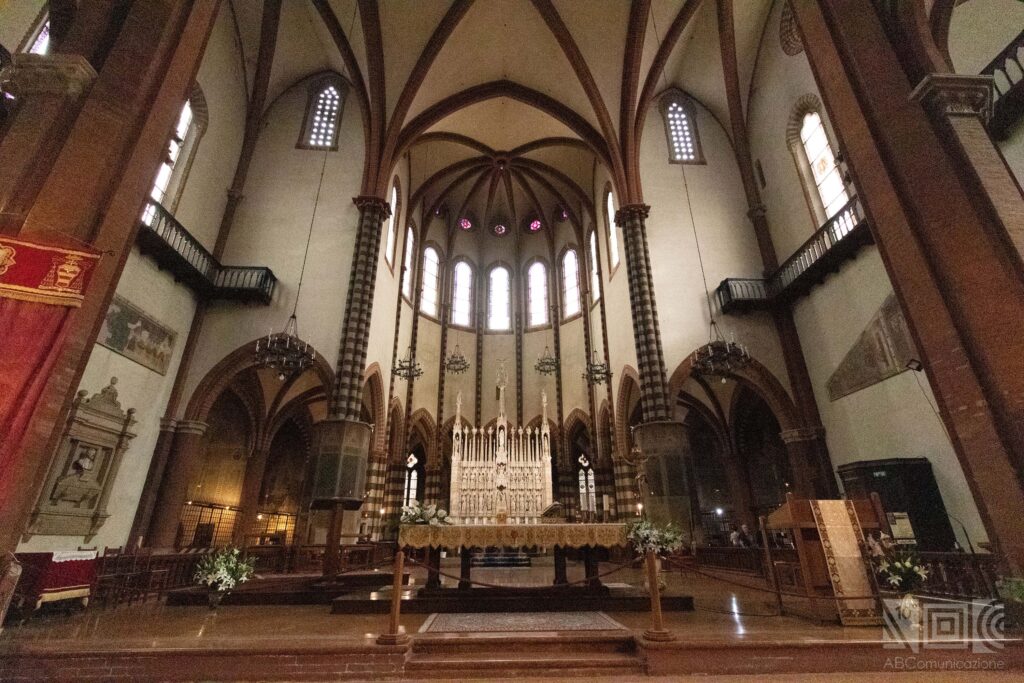
From its birth to the present day, the Basilica has been victim of numerous catastrophes, both natural and human-made.
The first major damage that required general restoration took place between the years 1505 and 1796, due to the combined effect of the earthquake and subsequent Napoleonic raids.
The contribution of the famous Bolognese restorer and man of letters Alfonso Rubbiani became very important; in fact, from 1872 until his death in 1913, he dedicated all his energies to restoring the basilica to its former magnificence.
But the church suffered its most serious attack on 24 July 1943, when an allied bombardment hit it full force. The church appeared as a pile of rubble, with no roof to protect the artistic heritage inside, and with parts of the structure crumbling.
Restoration work began the same year and was completed five years later in 1948. A large part of the walls had to be demolished, as well as some interior parts and many decorations.
The square in front, which had suffered serious damage, was also restored, regaining its connotation as the center of the district’s political and commercial life.
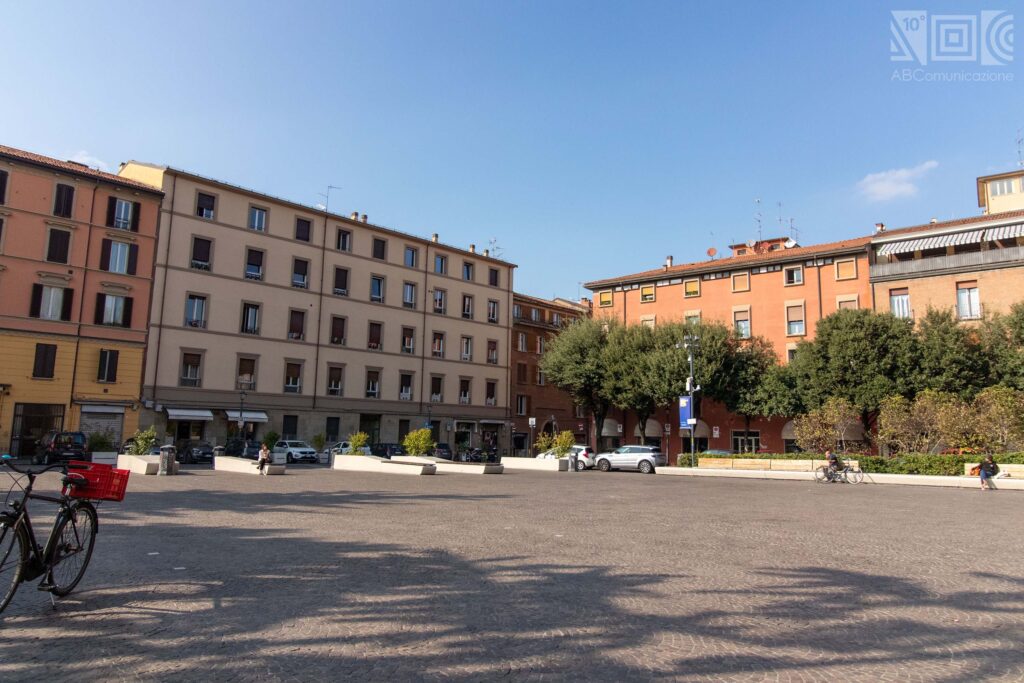
The cloisters of the Basilica of San Francesco
Of the many cloisters that existed in the basilica before the bombing, only two remain intact: the Cloister of the Deads and the Great Cloister.
The Cloister of the Deads, whose entrance is next to the main entrance of the basilica, is so called because it was formerly used as a cemetery. There are still remains of tomb slabs of famous doctors of the Bolognese Studio, such as the slab of Bernardino Zambeccari. Built between the 13th and 14th centuries, the Cloister of the Deads was initially larger and larger than it is today. During the construction of the Muzzarelli Chapel, the size of the cloister was reduced exponentially. As many as four arches were demolished to make room for the Chapel!
The second cloister is called the large cloister. Located in the southern part of the Cloister of the Deads, the large cloister has always been the one with the largest dimensions. Nicola da Giursi began building this cloister in 1460 and it was not completed until 1571 by Tommaso Martelli. It is currently not possible to enter or visit this cloister.
Access is only allowed to the cloister of the dead by asking for a guided tour of the basilica’s friars or volunteers. A peculiarity of this cloister is that during different periods of the year it hosts several solidarity markets renowned in Bologna. Proceeds from the sale of the objects are used to support the structures of the basilica and, from time to time, for specific aid to the missions of the Franciscan Order.
Basilica of San Francesco and its solidarity markets
The first market of the year, called St Anthony’s market, is held every year during the month of May and ends around mid-June, on the occasion of the patron saint of the religious province to which the basilica of San Francesco belongs. Furniture, clothing, footwear, garden equipment, gifts and books and other collected material are sold.
The San Francesco market, on the other hand, runs from the first week of September until mid-October. Why precisely during these months? Because it is the period in which San Francesco of Assisi, patron and founder of the Basilica, is celebrated. Here, too, you can find all kinds of second-hand objects.
Finally, you will find the Christmas market, which starts in the last week of November and ends with the Epiphany. Christmas items, cribs, decorations, costume jewelry and even second-hand clothing and books are sold.
All the markets listed above are open every day of the week, including weekends, from 9:00 to 12:00 and from 15:00 to 19:00. Many people donate items they no longer use to the convent during the year to be sold. The material can be handed over to the volunteers during the opening hours of the Basilica, as long as it is in good condition, in working order and the clothing is clean and tidy.
If you are a market enthusiast, we recommend you also read our article: the Quadrilateral Market in Bologna!
Inside the Basilica
The entrance to the basilica has three naves. At the end of the nave is the majestic Primitive Altar, consecrated by Pope Innocent IV in 1250.
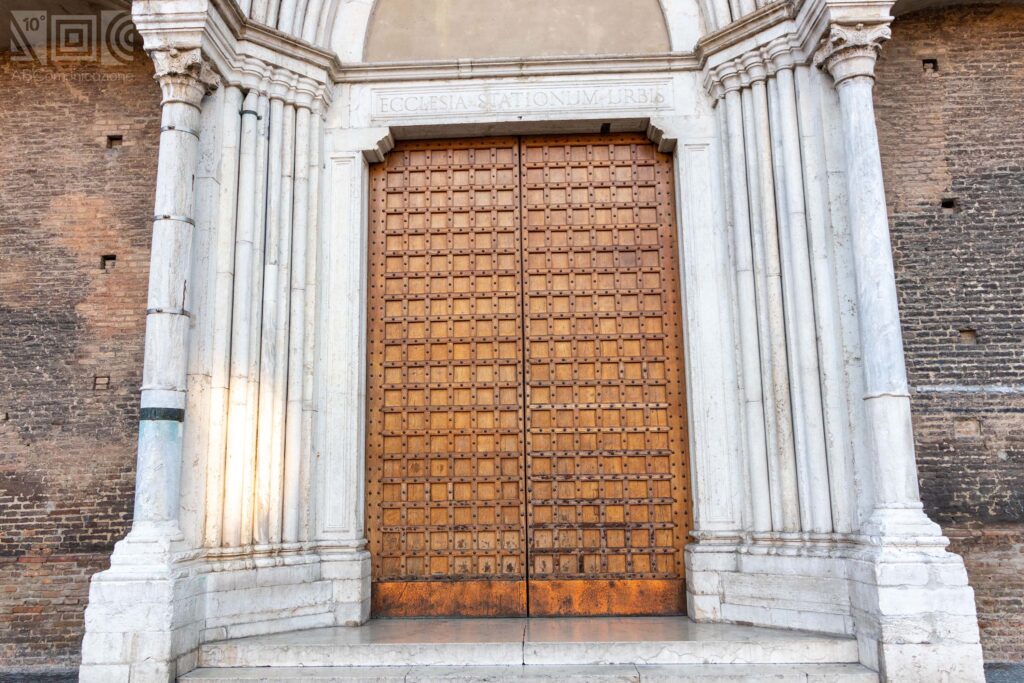
In the stained glass windows, rebuilt after countless demolitions and reconstructions, one finds depictions of episodes from the life of San Francesco.
Another peculiarity of this basilica is that it has nine chapels inside.
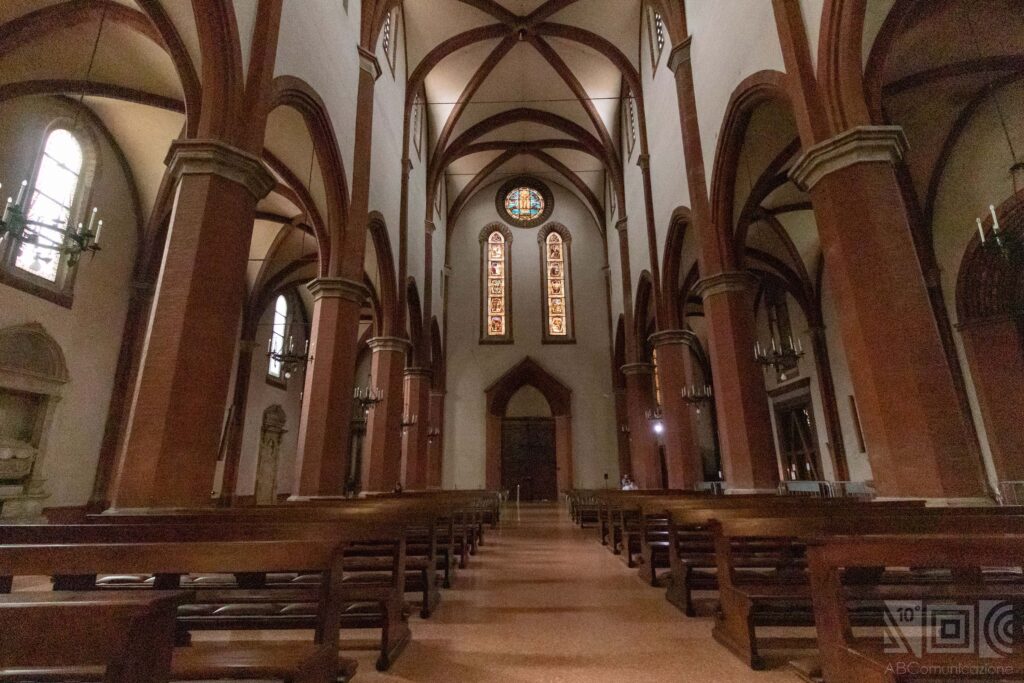
They too have obviously suffered damage and transformations over the years but, between the 19th and 20th centuries, they were all restored one by one.
Of the nine, we would like to point out the first dedicated to the Madonna of San Luca (read also the article: The Sanctuary of the Madonna of San Luca between sacred and legend) and the second also called “the chapel of the Stigmata”, as the episode of the stigmata is depicted on the altar of the chapel. All nine are characterized and distinguished by unique features.
In 1537, a music chapel was also established, headed by Father Giambattista Martini, who was also esteemed and praised by Mozart!
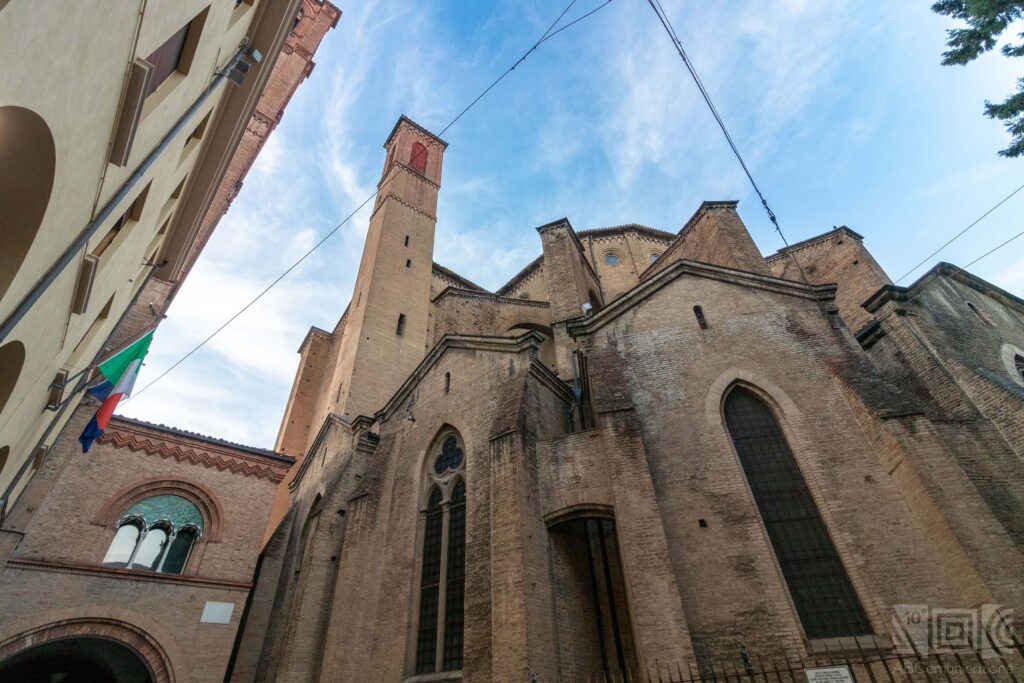
Bell towers and library of the basilica
The Basilica of San Francesco also has two bell towers and a library.
The small bell tower, leaning against the right transept of the church, dates back to 1260 and houses a single bell. The belfry is accessed via a narrow spiral staircase.
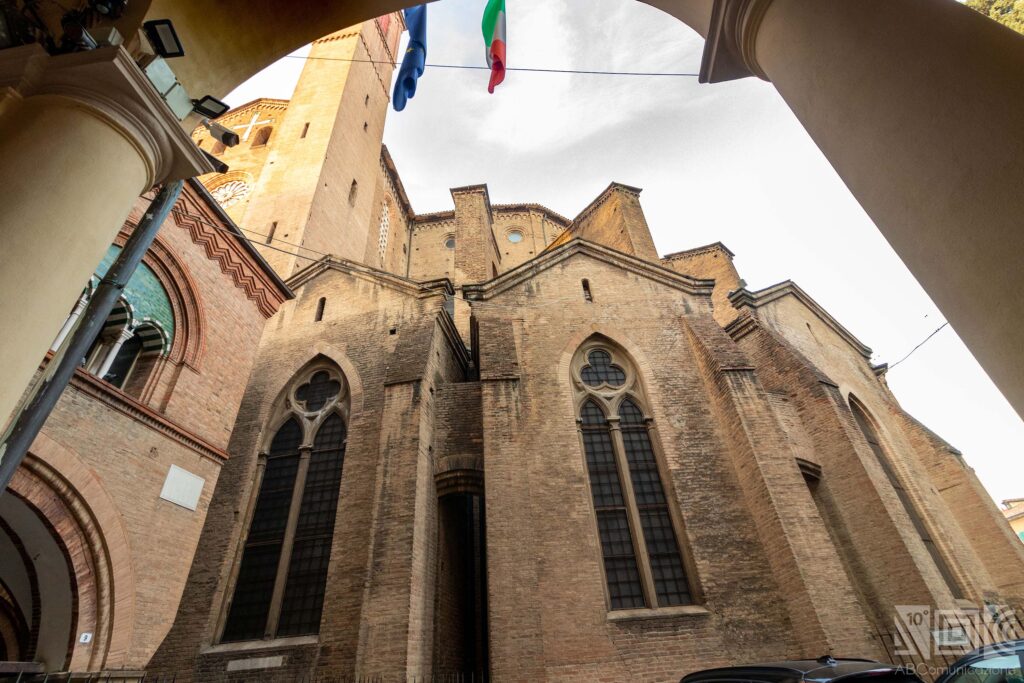
The large bell tower, a true masterpiece of architecture, was built by Antonio di Vincenzo between 1397 and 1402 and reaches a height of 48.50 meters. The belfry, lit by elegant triple lancet windows, houses a fine concert of five bells, which has always been considered one of the best in the entire city and the entire Archdiocese of Bologna.
Did you know that the Biblioteca di San Francesco has a patrimony of 39,000 volumes and pamphlets? The current library was rebuilt in 1957, also collecting the book collections of the convents of Emilia Romagna, and was housed in the large former convent refectory hall previously frescoed by Francesco da Rimini. The Rubbiani Archive, the Historical Archive of the Bolognese Province of Friars Minor Conventual and the Music Archive make up its heritage. It is not open to the public and does not normally lend books, but it is possible to send requests for consultation or digital materials by making arrangements with the contact person, writing to sanfrancescobologna.biblioteca@gmail.com, indicating precisely the requests and one’s contact details.
Piazza San Francesco in Bologna
During antiquity and until 1874, Piazza Malpighi was known by everyone as the Seliciata di San Francesco. Since 1954, on 8 December each year, the citizens of Bologna, together with their cardinal, have met under the copper statue of the Blessed Immaculate Virgin, which stands right in front of the tombs of Rolandino Romanzi, Accursio and Odofredo. The three tombs are located behind the apse of San Francesco.
Did you know that the tombs of the glossators were located in the Certosa Cemetery until 1892? If you want to know more about the Certosa, read also The Certosa of Bologna: a cemetery museum.
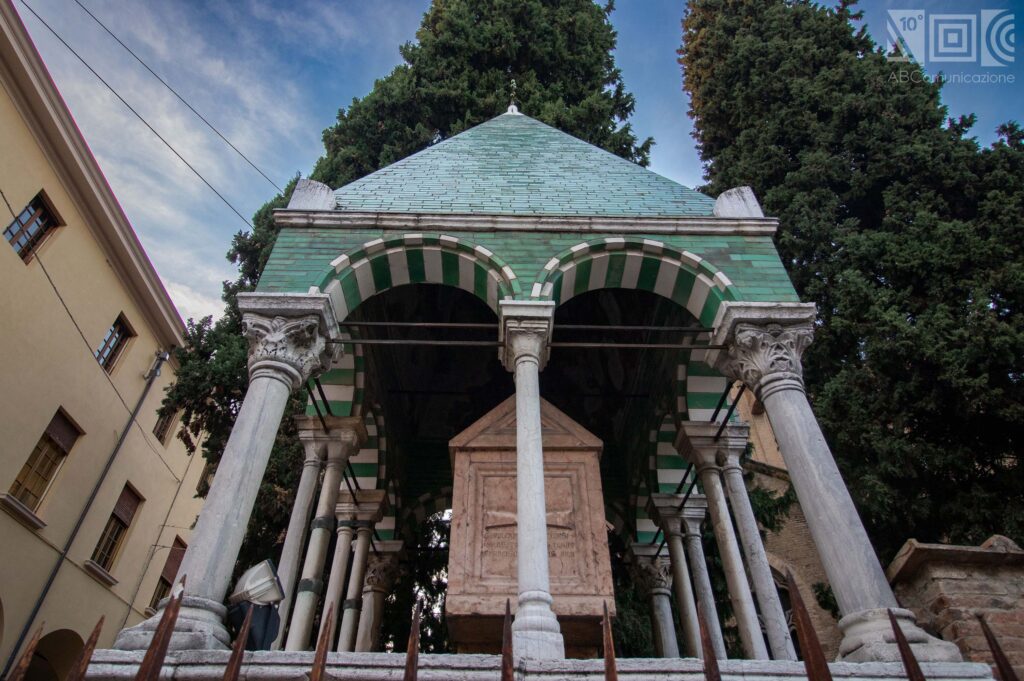
The portico on the western side of the square also belonged to the Franciscans. Built in 1626, and completed only 20 years later, the colonnade also features some now illegible episodes from the life of St. Anthony of Padua.
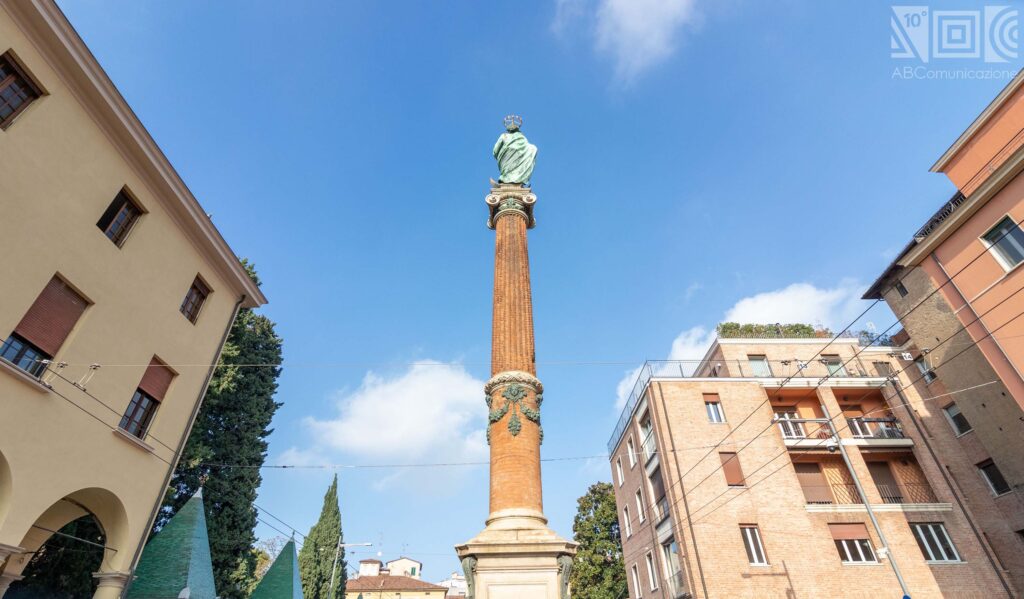
In 1877 the Herb Market was moved from Piazza Maggiore to Piazza Malpighi and remained there for a good 35 years. In that same year, excavations by the archaeologist Antonio Zannoni unearthed a centuries-old metal workshop containing some 15,000 bronze relics dating back to the 8th century B.C. in the meadow of Piazza San Francesco in Bologna.
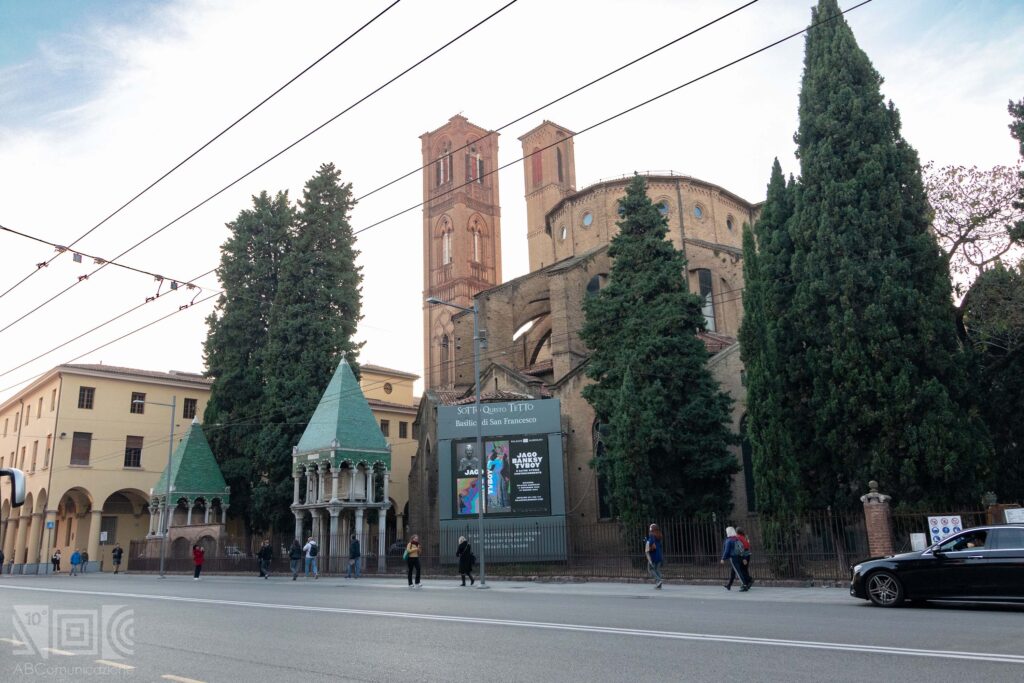
Since ancient times, the square in front of the basilica of San Francesco has always been a center of life and a meeting point for young people. In the past, it hosted merry-go-rounds, circuses and performances by acrobats of various kinds. Today, many young people gather in the square every evening to spend some time together in the company of a guitar. Another meeting place here in Bologna are the porticoes, a Unesco heritage site. Read also: The porticoes of Bologna: a UNESCO World Heritage.
The current conformation is due to the redevelopment project completed in March 2017, which involved the entire area of the square, from the corner with Piazza Malpighi to the beginning of Via de’ Marchi, including the entire Via del Borghetto in the renovation.
Initiated as part of the ‘Di nuovo in centro’ (New downtown) programme, the project for the overall redevelopment of the square saw the addition of a new green area and new furnishing elements (seats and flower boxes), as well as the upgrading of public lighting. The asphalt was replaced with new porphyry cube paving on both the pavements and the roadway, where elements to reduce vehicular speed and a remote control system for semi-pedestrianisation of the square were also introduced.
The play of stone elements that, varying in level, take up the scans of the façade on the side opposite the basilica, turning into planters under the dwellings and into planters and seating in the area in front of the churchyard with the aim of increasing the monumental effect of the area.
It should be borne in mind that every Tuesday of the year, even on public holidays, the square hosts a small market specializing in the sale of plants and flowers from 8 a.m. to 3 p.m.
What are the Masses times at the Basilica of San Francesco in Bologna?
The church is open to the public every morning from 6:45 until 12:00 and every afternoon from 15:30 until 19:00.
Masses on feast days are at: 7:30 a.m., 9:00 a.m., 11:00 a.m., 12:00 p.m. (suspended during July and August) and the last one at 6:00 p.m.
On weekdays, however, the times are: 7 a.m., 8 a.m., 10 a.m. (suspended during the months of July and August) and the last one at 6 p.m.
The Holy Rosary is every day at 5.30 p.m. and Eucharistic adoration every first Thursday of the month from 6.30 p.m. to 7.45 p.m.
For confessions just go to the confessors every morning from 8:00 to 11:45 and every afternoon from 15:30 to 18:30. On Wednesday mornings, from 10:30 a.m., the presence of confessors is not guaranteed because the friars are in meetings!
During the months of July and August, it is only possible to hear confessions in the afternoon from 16:30 to 18:30.
Would you like to know the times of masses in other basilicas too? Have a look at our article: the basilica of Santa Maria dei Servi.
Bibliography
- Bernabei G., San Francesco, Bologna, Santarini, 1993.
- Baldini E., Virelli G., La Fabbriceria di San Francesco: i restauri della Basilica bolognese letti attraverso le carte, Bologna, Bononia University Press, 2013.
- Rodriquez F., La Basilica di San Francesco in Bologna, Parma, 1948.
- Baldini E., Monari P., Virelli G., La fabbrica dei sogni: il bel San Francesco di Alfonso Rubbiani, Bononia University Press, 2014.


